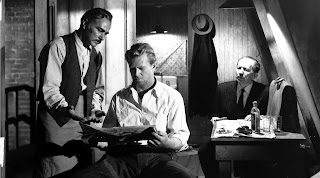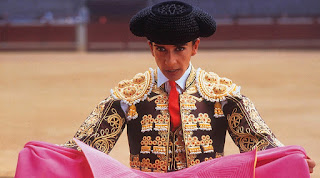Contemplating three years' cultural diet. Secondly, the music.
Returning to Edinburgh has kicked the blog back to life after three years of repose. Having already picked over the best films I've seen during this hiatus, now comes the opportunity to select fifty music tracks I have discovered (belatedly in many cases), and which then took me over and were played again and again.
Many songs have brought fun – those which found me dancing on repeat include Basement Jaxx, Lizzo, Camp Lo and Teena Marie. Some have a more emotional pull and will always, for me, be tied to a time and place; the Mark Kozelek, Francis Harris and Aretha Franklin tracks have each had an impact.
There is music new and old to consider. New music has taken a back seat the past few months whilst I have become thoroughly obsessed with Andy Kellman's excellent and comprehensive R&B blog. It's been a deep and extended dive into this world, only partially reflected below; but I am sure I will resurface at some point soon to try some fresher produce again. These things happen in cycles.
This list might not consistently reflect the very best music I have heard in this time, although much of it is sublime. These grooves and jams are the ones which embedded themselves. This is a more personal list than the films and compiling it a more personal quest. The fifty tracks tell a story of three years of my life.
A Spotify playlist appears after the list, which is presented in High Fidelity-style autobiographical order. Please listen.
Matthew Dear – Her Fantasy
Toy – Heart Skips a Beat
Spoek Mathambo feat. Yolanda – Let Them Talk
John Talabot feat. Pional – Destiny
El-P – Request Denied
Villagers – The Waves
John Grant – Pale Green Ghosts
Louis Armstrong and His Hot Five – Fireworks
Basement Jaxx – Back 2 the Wild
Deerhunter – Dream Captain
Arctic Monkeys – Crying Lightning
Oneohtrix Point Never – Boring Angel
Tricky – Aftermath
Kelela – Bank Head (Extended)
Lizzo feat. Sophia Eris – Batches & Cookies
Billie Holiday & Her Orchestra – Strange Fruit
Triosk – Lost Broadcast
David Bowie – Jump They Say
Wild Beasts – Wanderlust
Mark Kozelek & Jimmy LaValle – Gustavo
Jimmy Hughes – Steal Away
Jimmy Scott – Sycamore Trees
Kate Bush – Lyra (The Golden Compass)
Ono with The Brother Brothers – Yes, I'm a Witch
Digable Planets – Rebirth of the Slick (Cool Like Dat)
Zebra Katz feat. Njena Reddd Foxxx – Ima Read
Yarbrough & Peoples – Don't Stop the Music
Bonobo – Noctuary
Teena Marie – I Need Your Lovin'
Camp Lo – Luchini AKA This Is It
The Time – 777-9311
Stevie Wonder – Do I Do
Zapp – More Bounce to the Ounce
George Benson – Turn Your Love Around
Cherrelle – I Didn't Mean to Turn You On
Shabazz Palaces – Forerunner Foray
Francis Harris – What She Had
Aretha Franklin – Call Me
The S.O.S. Band – Just Be Good to Me
Michael Jackson – Who Is It
Rick James – Big Time
Donny Hathaway – Giving Up
Herbert – Something Isn't Right
Blackstreet feat. Dr. Dre & Queen Pen – No Diggity
Erykah Badu – On & On
En Vogue – Hold On
Gladys Knight & The Pips – Midnight Train to Georgia
Bobby Womack – Across 110th Street
Ann Peebles – I Can't Stand the Rain
Ólafur Arnalds & Alice Sara Ott – Verses
Note: sadly, Breakdown by Prince and The Screams of Passion by The Family (written and mostly performed by Prince) are not available on Spotify. Happily, this made room for Kate Bush and George Benson. Enjoy!
Returning to Edinburgh has kicked the blog back to life after three years of repose. Having already picked over the best films I've seen during this hiatus, now comes the opportunity to select fifty music tracks I have discovered (belatedly in many cases), and which then took me over and were played again and again.
Many songs have brought fun – those which found me dancing on repeat include Basement Jaxx, Lizzo, Camp Lo and Teena Marie. Some have a more emotional pull and will always, for me, be tied to a time and place; the Mark Kozelek, Francis Harris and Aretha Franklin tracks have each had an impact.
There is music new and old to consider. New music has taken a back seat the past few months whilst I have become thoroughly obsessed with Andy Kellman's excellent and comprehensive R&B blog. It's been a deep and extended dive into this world, only partially reflected below; but I am sure I will resurface at some point soon to try some fresher produce again. These things happen in cycles.
This list might not consistently reflect the very best music I have heard in this time, although much of it is sublime. These grooves and jams are the ones which embedded themselves. This is a more personal list than the films and compiling it a more personal quest. The fifty tracks tell a story of three years of my life.
A Spotify playlist appears after the list, which is presented in High Fidelity-style autobiographical order. Please listen.
Matthew Dear – Her Fantasy
Toy – Heart Skips a Beat
Spoek Mathambo feat. Yolanda – Let Them Talk
John Talabot feat. Pional – Destiny
El-P – Request Denied
Villagers – The Waves
John Grant – Pale Green Ghosts
Louis Armstrong and His Hot Five – Fireworks
Basement Jaxx – Back 2 the Wild
Deerhunter – Dream Captain
Arctic Monkeys – Crying Lightning
Oneohtrix Point Never – Boring Angel
Tricky – Aftermath
Kelela – Bank Head (Extended)
Lizzo feat. Sophia Eris – Batches & Cookies
Billie Holiday & Her Orchestra – Strange Fruit
Triosk – Lost Broadcast
David Bowie – Jump They Say
Wild Beasts – Wanderlust
Mark Kozelek & Jimmy LaValle – Gustavo
Jimmy Hughes – Steal Away
Jimmy Scott – Sycamore Trees
Kate Bush – Lyra (The Golden Compass)
Ono with The Brother Brothers – Yes, I'm a Witch
Digable Planets – Rebirth of the Slick (Cool Like Dat)
Zebra Katz feat. Njena Reddd Foxxx – Ima Read
Yarbrough & Peoples – Don't Stop the Music
Bonobo – Noctuary
Teena Marie – I Need Your Lovin'
Camp Lo – Luchini AKA This Is It
The Time – 777-9311
Stevie Wonder – Do I Do
Zapp – More Bounce to the Ounce
George Benson – Turn Your Love Around
Cherrelle – I Didn't Mean to Turn You On
Shabazz Palaces – Forerunner Foray
Francis Harris – What She Had
Aretha Franklin – Call Me
The S.O.S. Band – Just Be Good to Me
Michael Jackson – Who Is It
Rick James – Big Time
Donny Hathaway – Giving Up
Herbert – Something Isn't Right
Blackstreet feat. Dr. Dre & Queen Pen – No Diggity
Erykah Badu – On & On
En Vogue – Hold On
Gladys Knight & The Pips – Midnight Train to Georgia
Bobby Womack – Across 110th Street
Ann Peebles – I Can't Stand the Rain
Ólafur Arnalds & Alice Sara Ott – Verses
Note: sadly, Breakdown by Prince and The Screams of Passion by The Family (written and mostly performed by Prince) are not available on Spotify. Happily, this made room for Kate Bush and George Benson. Enjoy!






































